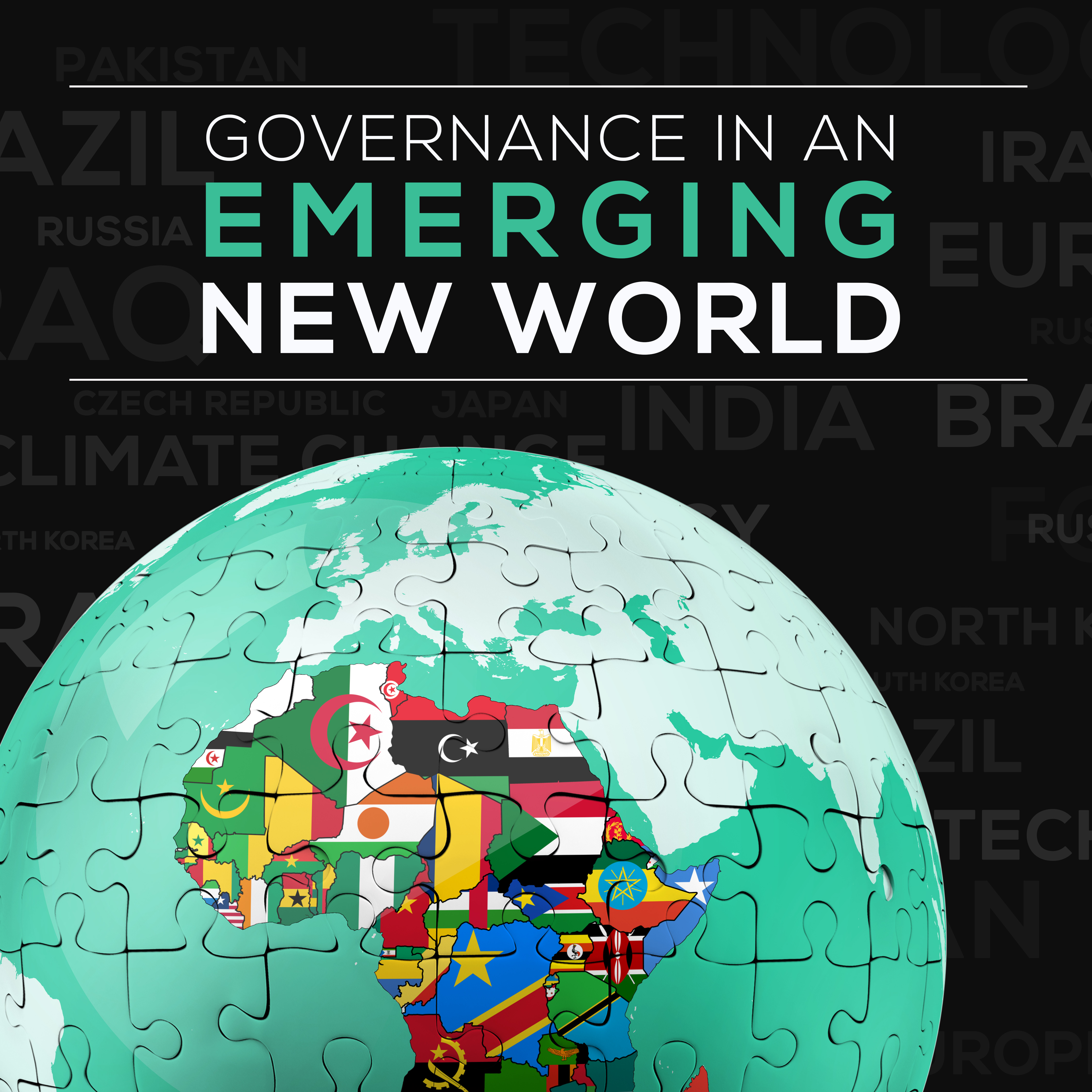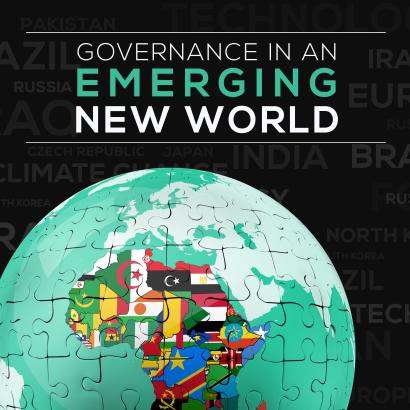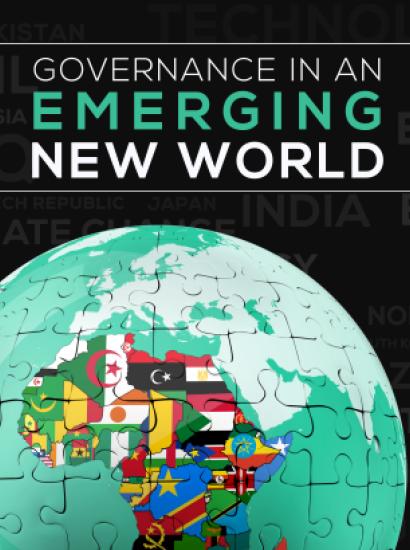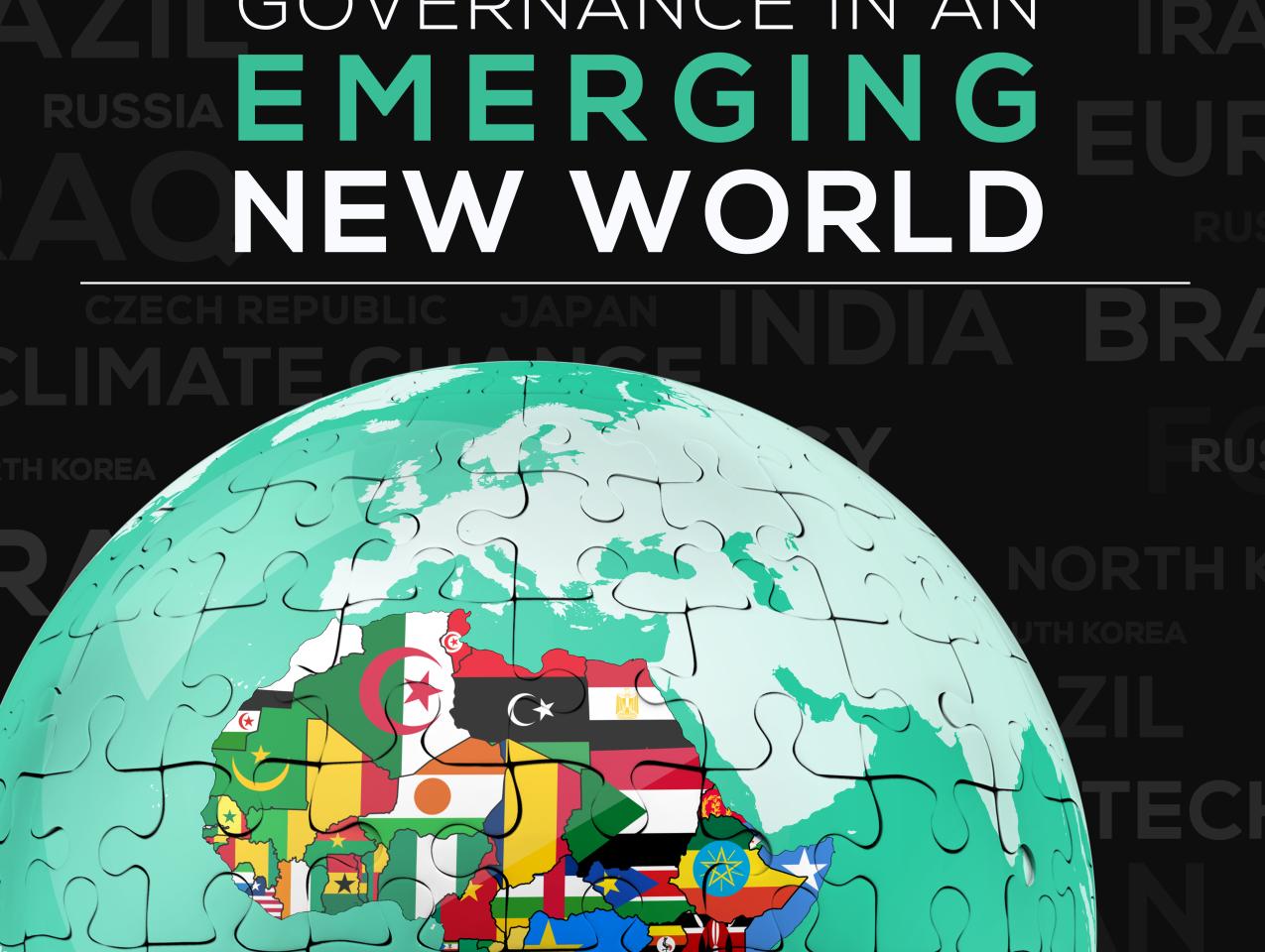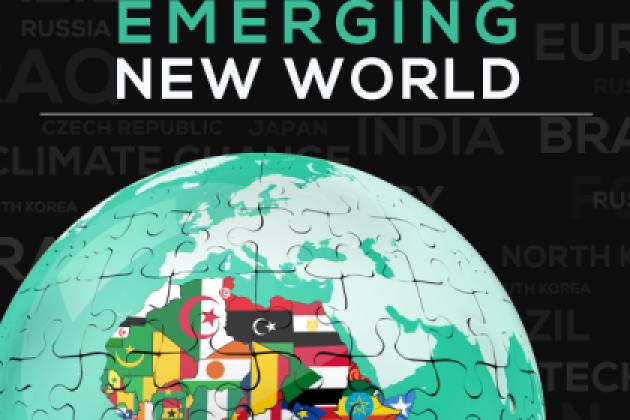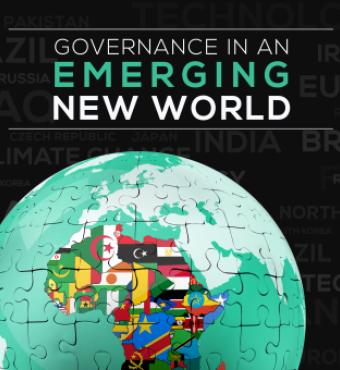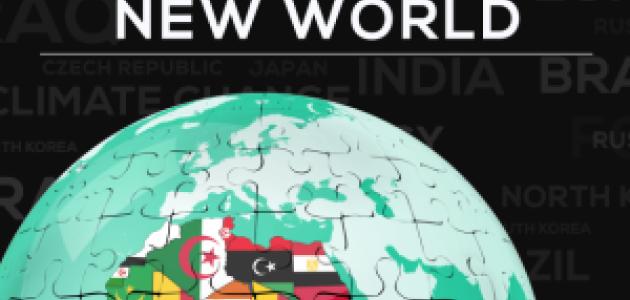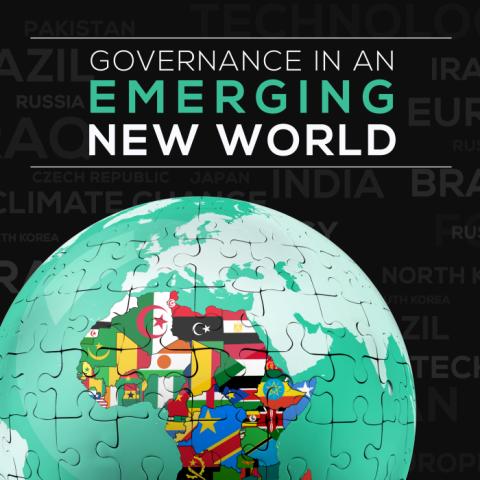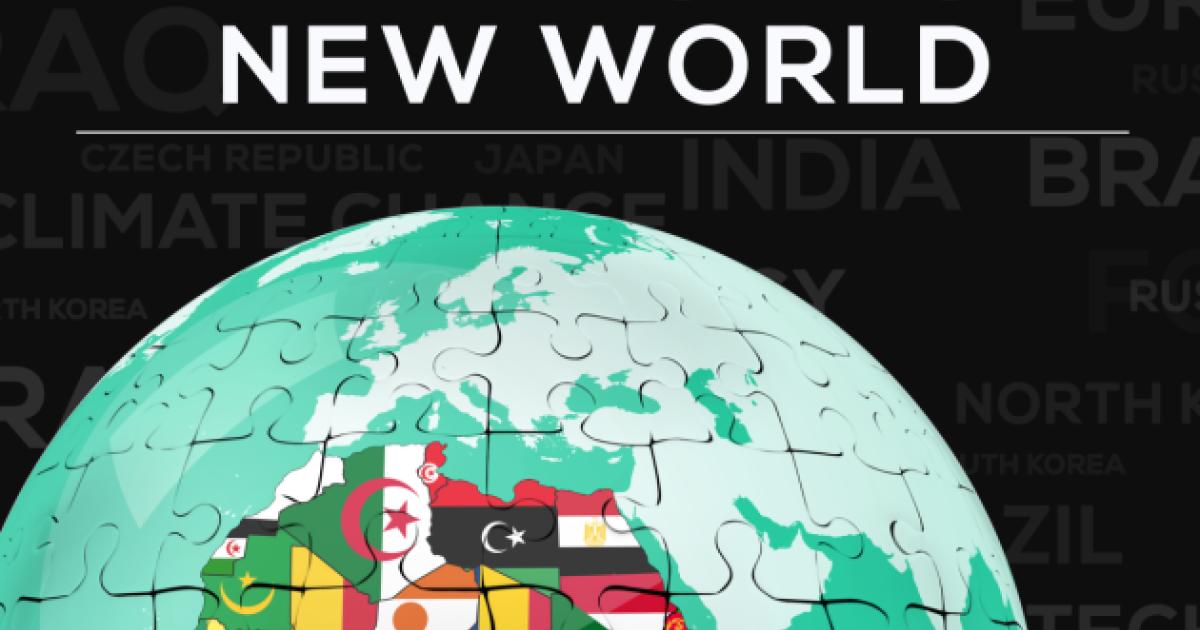- Energy & Environment
Sharp changes are afoot throughout the globe. Demographics are shifting, technology is advancing at unprecedented rates, and these changes are being felt everywhere.
How should we develop strategies to deal with this emerging new world? We can begin by understanding it.
First, there is the changing composition of the world population, which will have a profound impact on societies. Developed countries are experiencing falling fertility and increasing life expectancy. As working-age populations shrink and pensions and care costs for the elderly rise, it becomes harder for governments to afford other productive investments.
At the same time, high fertility rates in Africa and South Asia are causing both working-age and total populations to grow, but that growth outpaces economic performance. And alongside a changing climate, these parts of the world already face growing impacts from natural disasters, human and agricultural diseases, and other resource constraints.
Taken together, we are seeing a global movement of peoples, matching the transformative movement of goods and of capital in recent decades—and encouraging a populist turn in world politics.
Second is automation and artificial intelligence. In the last century, machines performed as instructed, and that “third industrial revolution” completely changed patterns of work, notably in manufacturing. But machines can now be designed to learn from experience, by trial and error. Technology will improve productivity, but workplace disruption will accelerate—felt not only by call center responders and truck drivers but also by accountants, by radiologists and lawyers, even by computer programmers.
All history displays this process of change. What is different today is the speed. In the early 20th century, American farm workers fell from half the population to less than five percent alongside the mechanization of agriculture. Our K-12 education systems helped to navigate this disruption by making sure the next generation could grow up capable of leaving the farm and becoming productive urban workers. With the speed of artificial intelligence, it’s not just the children of displaced workers but the workers themselves who will need a fresh start.
Underlying the urgency of this task is the reality that there are now over 7 million “unfilled jobs” in America. Filling them and transitioning workers displaced by advancing technology to new jobs will test both education (particularly K-12, where the United States continues to fall behind) and flexibility of workers to pursue new occupations. Clearly, community colleges and similarly nimble institutions can help.
The third trend is fundamental change in the technological means of production, which allows goods to be produced near where they will be used and may unsettle the international order. More sophisticated use of robotics alongside human colleagues, plus additive manufacturing and unexpected changes in the distribution of energy supplies, have implications for our security and our economy as well as those of many other trade-oriented nations who may face a new and unexpected form of deglobalization.
This ability to produce customized goods in smaller quantities cheaply may, for example, lead to a gradual loss of cost-of-labor advantages. Today, 68 percent of Bangladeshi women work in sewing, and 4.5 million Vietnamese work in clothing production. Localized advanced manufacturing could block this traditional route to industrialization and economic development. Robots have been around for years, but robotics on a grand scale is just getting started: China today is the world’s biggest buyer of robots but has only 49 per 10,000 workers; South Korea has 531.
These advances also diffuse military power. Ubiquitous sensors, inexpensive and autonomous drones, nanoexplosives, and cheaper access to space through microsatellites all empower smaller states and even individuals, closing the gap between incumbent powers like the United States and prospective challengers. The proliferation of low-cost, high-performance weaponry enabled by advances in navigation and additive manufacturing diminishes the once-paramount powers of conventional military assets like aircraft carriers and fighter jets. This is a new global challenge, and it threatens to undermine U.S. global military dominance, unless we can harness the new technologies to serve our own purposes. As we conduct ourselves throughout the world, we need to be cognizant that our words and deeds are not revealed to be backed by empty threats. At the same time, we face the challenge of proliferation of nuclear weapons.
Finally, the information and communications revolution is making governance everywhere more difficult. An analogue is the introduction of the printing press: as the price of that technology declined by 99 percent, the volume grew exponentially. But that process took ten times longer in the 15th, 16th, and 17th centuries than we see today. Information is everywhere—some accurate, some inaccurate, such that entire categories of news or intelligence appear less trustworthy. The “population” of Facebook now exceeds the population of the largest nation state. We have ceaseless and instantaneous communication to everybody, anybody, at any time. These tools can be used to enlighten, and they can also be used to distort, intimidate, divide, and oppress.
On the one hand, autocrats increasingly are empowered by this electronic revolution, enabled to manipulate technologies to solidify their rule in ways far beyond their fondest dreams in times past. Yet individuals can now reach others with similar concerns around the earth. People can easily discover what is going on, organize around it, and take collective action.
At present, many countries seek to govern over diversity by attempting to suppress it, which exacerbates the problem by reducing trust in institutions. Elsewhere we see governments unable to lead, trapped in short-term reactions to the vocal interests that most effectively capture democratic infrastructures. Both approaches are untenable. The problem of governing over diversity has taken on new dimensions.
The good news is that the United States is remarkably well-positioned to ride this wave of change if we are careful and deliberate about it. Meanwhile, other countries will face these common challenges in their own way, shaped by their own capabilities and vulnerabilities. Many of the world’s strongest nations today—our allies and otherwise—will struggle more than we will. The more we can understand other countries’ situations, the stronger our foundation for constructive international engagement.
This is why we have set off on this new project on Governance in an Emerging New World. Our friend Senator Sam Nunn has said that we’ve got to have a balance between optimism about what we can do with technology and realism about the dark side. So we aim to understand these changes and inform strategies that both address the challenges and take advantage of the opportunities afforded by these transformations.
To do so, we are convening a series of papers and meetings examining how these technological, demographic, and societal changes are affecting the United States (our democracy, our economy, and our national security) and countries and regions around the world, including Russia, China, Latin America, Africa, and Europe.
***
As societies across the developed world grow older and some even shrink, Africa stands out as the overwhelming engine of global population and labor force growth, and the source of much of the world’s youth in coming decades. But, across the continent, African states also face economic challenges, military conflict, and political instability. Moreover, they will feel the effects of a changing climate and environment. Against this backdrop—and keeping in mind the great diversity of the continent—how will African states and people alike realize the promise of advancing technologies and new means of production to advance their standard of living? And what does the spread of communications, via social media and mobile technology, mean for the future of governance in each region of the continent? Finally, can Africa transform itself—with its own innovators and foreign assistance—from the global engine of population growth to an engine of economic growth?
This volume begins with an assessment of Africa’s place in the changing world of international trade and the prospects of technological development on the continent. Both inter- and intra-continental trade is weak, as Anthony Carroll, vice president at Manchester Trade, and Eric Obscherning, of C&M International, describe. But educational and infrastructure improvements, coupled with economic reforms, could open the continent further and lay the foundation for widespread adoption of new technological platforms and tools.
Ambassador Chet Crocker, the former assistant secretary of state for African affairs, follows with a careful consideration of the future of governance in Africa. He writes that developing economically and politically inclusive governance institutions, within such a complex national and regional political web, will be crucial to the long-term peace and prosperity of African states.
Complicating that effort will be climate change, which will affect Africa acutely. Georgetown University’s Mark Giordano and Elisabeth Bassini review what we know so far about climate change in Africa; call for more research to understand the expected local impacts across the diverse ecosystems of the continent; and recommend ways to prepare for these looming changes.
Surveying the continent, George Mason University’s Jack Goldstone describes Africa’s demographic outlook as the most dynamic in the world. But to realize the full potential of that dynamism without losing its demographic dividend to global out-migration, African and foreign states alike should work together to bring down fertility rates and invest in the continent’s youth.
Finally, Andre Pienaar and Zach Beecher, of C5 Capital, see in Africa’s youth the potential for significant economic progress through greater access to mobile internet technology. Recognizing how authoritarian states and other actors have weaponized social media and other communications platforms around the world, they argue that good governance and a commitment to transparent institutions will be vital to realizing that potential.
We look forward to the discussion of this dynamic and diverse region, and we thank our colleagues at the Hoover Institution who have supported this project, particularly Shana Farley and Rachel Moltz for their work on this volume.







